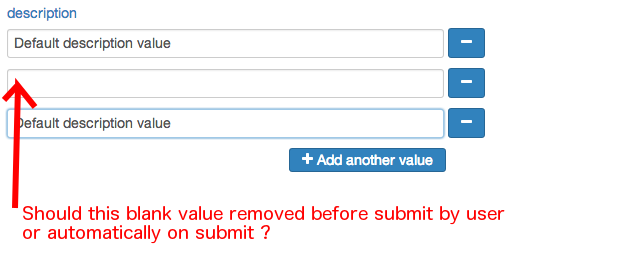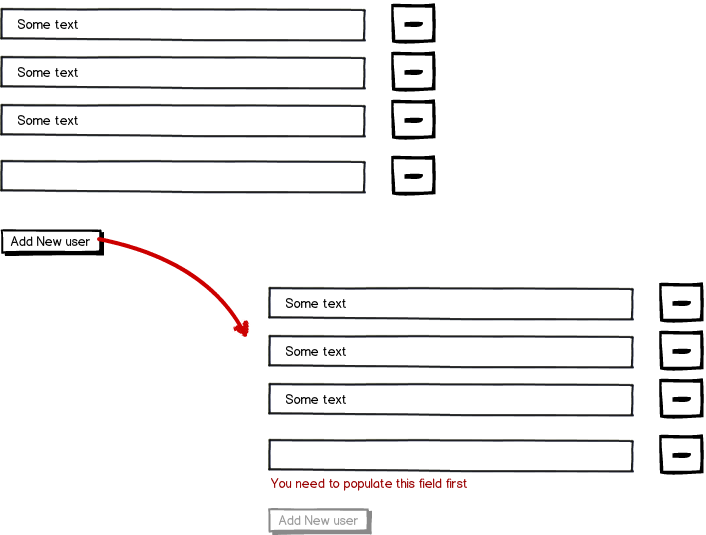I am designing a dynamic form with multivalued field (with the famous "Add another value" button).
My question concerns the validation of this type of fields :
Should blank values be blocking (the user has to remove empty input fields before submitting the form) or should the form take care of removing those empty fields at submit ?
Update : mockup added as requested


